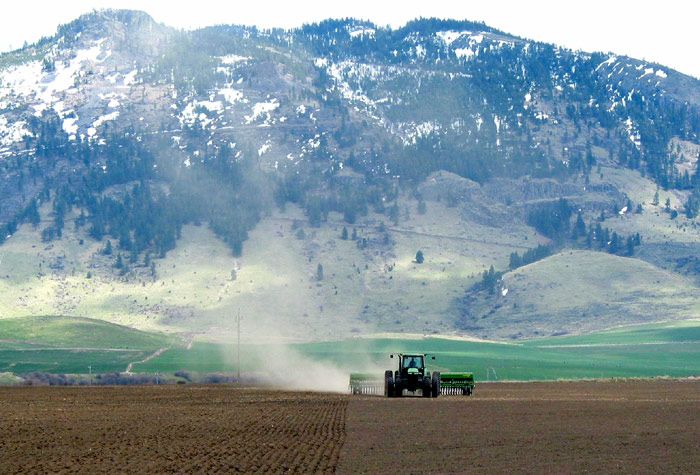Spring takes its sweet time
Published 2:07 pm Saturday, April 19, 2008

- Across the valley, spring planting for some farmers like Wade Bingaman, above, may be off to a late start, but most agree thereâs still plenty of time to catch up. The biggest concern may be that once the weather does warm up, it will turn too hot, too fast. - Observer Photos/Mardi Ford
Spring has been a long time coming to the Grande Ronde Valley this year. Nobody knows that better than those whose seven-day work week is lived out in the elements 365 days a year, year in and year out.
Trending
At the north end of the valley, Imbler has had more than its fair share of wind, drifting snow and freezing temperatures.
Even so, seventh-generation farmer Wade Bingaman says the weather has
not impacted his farming as much as it definitely could have.
Trending
Under the icy gaze of Mount Emily, Bingaman was planting a field of barley Wednesday. Looking west, he says, “My dad has made the comment he’s never seen that much snow left on the face of the mountain this late in the year.”
Bingaman says this winter has been the way it was when he was a kid.
“Even so, I really haven’t seen any winter crop damage. We’re a couple of weeks behind in planting, but it’ll catch up when it warms up,” he says.
For the past two weeks, Oregon State University Extension Agronomist Darrin Walenta has been planting his own field trials in wet, windy and snowy conditions. He agrees that March and April have been more typical for Northeast Oregon weather.
“In recent years, this same time period has become generally warmer and drier allowing field work to be carried out earlier and over a longer period of time,” he says.
Although there is a considerable amount of field work and planting left to do, Walenta says growers are making good progress despite the narrow windows of opportunity to get into the field.
Sometimes, that progress is helped by simply the lay of the land.
On the south end of the valley, where the soil is sandier and dries out faster, farmer Matt Insko says the lingering winter weather has not had a huge impact. He already has his spring wheat planted.
And this time last year, Insko was already irrigating. So for him, the cooler, wetter weather has actually saved him a little money.
He believes the pivots that may be seen already running on the south end of the valley, are likely applying chemicals.
“And it could be they are adding a little moisture to the already dry top soil -especially if it’s a new grass seed field that’s just been planted,” he says.
Feather-light, tiny grass seed is planted just under the soil surface.
At the north end of the valley, Bingaman is still looking at plenty of moisture just below the surface of his soil. He says there could actually be too much water if it heats up too quickly considering the amount of snow left in the mountains.
“Did you see how the river came up last weekend when it warmed up for a couple days? There’s potential for some flooding out in this part of the valley if it warms up too fast,” he says.
But it does need to warm up some, or the seed Bingaman and Insko already have in the ground is not going to grow.
“Seed does not need a whole lot of warm for it to take off and sprout,” Insko says. “But it needs warm to grow.”
The lingering cold, he says, is probably impacting sugar beet growers more than anyone. Sugar beet fields should have been planted by now, but with these freezing night temperatures, it’s just not happening.
Insko’s concern is also that temperatures will suddenly turn too hot too fast.
“Then the crops grow too fast and farmers can get caught off guard. You have a heckuva time staying on top of your fields when that happens,” he says.
“Older farmers are saying this is more normal than what we have been used to. So far, this weather has been a positive thing for me,” Insko says. “But it won’t be if it doesn’t warm up some pretty soon.”
He adds that the worst thing about the lingering winter weather is the affect it’s having on everybody’s attitude.
“Guys are just sick and tired of wearing three coats.”








